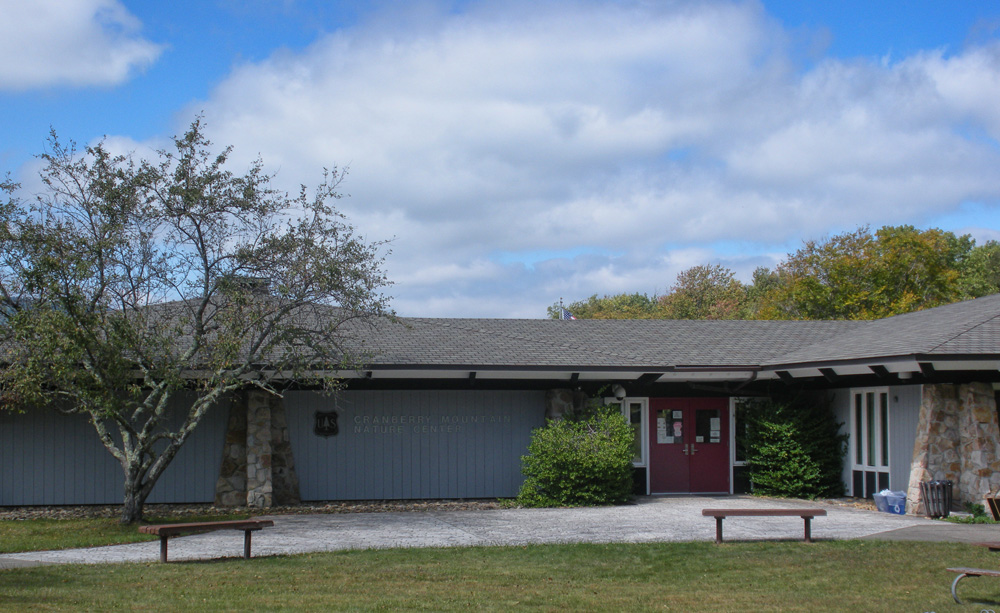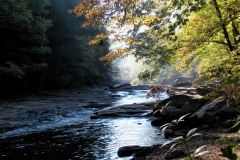Nature Photography, Lifestyle and Fitness
Williams River

My first trip to the Williams River was over Veteran’s Day in 1981. It almost didn’t happen. The original plan was to camp at Blackwater Falls, but the destination changed on a whim the day before we left. Starting out after everyone was off work on Friday afternoon, the six hour drive ended at Ken’s Creek in the wee hours of the morning. We slept as best we could in the truck, waiting for dawn and sunlight to set up camp. It was cold. As we came to know over the many seasons we camped along the Williams, the temperature averages about twenty degrees cooler than home in northeast Ohio. The handful of campers on that trip who had been to the area before assured us newbies that we “wouldn’t believe it” when the sun came up and we could see. They were not exaggerating.
In those early days, the “campground” was a fairly primitive affair. Access via the Williams River Road was a gut-busting ride, the dirt road being narrow and pocked with potholes and ruts from logging trucks. It was best to have 4WD, and anything less burly than a pickup was likely to have to slow to a crawl to avoid damage. The campsites themselves consisted of a post with a number, a lantern pole, and a fire ring made of rocks hauled up from the river. A shovel was a must, since there were no outhouses. The nearest town was forty minutes away, and it consisted of a Texaco station, a grocery store, and the Liquor Shack. The primal nature of the place was the main attraction. It was not unusual to camp there for a week and never see another person outside of the group. There was a ranger station at the end of the road, and the only time we saw the ranger was when we stopped by to refill our water jugs from the well.
Scenic Highway 150 stretches over the Gauley Mountains above the river valley. There are numerous overlooks and trailheads along its length. The Cranberry Glades Wilderness Center offers trail maps and advice for hikers. We read in a survival manual available for purchase there that “all birds are edible”. Good to know.

The Cranberry back country itself is one of my favorite places in the region. It is interesting in that it is an area of bogs of a type normally found much further to the north and in Canada. They are a remnant of the last glacial retreat. It’s well worth spending a day wandering the area, as there are plants and trees here that are found nowhere else in the state. More information can be found on the Cranberry Wilderness page of the Forest Service’s website.
A close second favorite is Black Mountain. Despite the ominous name, it is an astoundingly beautiful area to hike in any season of the year. There was a lot of logging in the area in the nineteenth and early twentieth centuries. A narrow gauge railway connected the peak of Black Mountain with the Williams River below. Only the usable portions of felled trees were hauled off the mountain. Branches and stumps were left to decay naturally where they fell. One particularly dry summer, a lightning strike on the mountain set all of this discarded material ablaze. The fire burned for days, and some areas burned clear down to the underlying bedrock. The entire mountaintop was left scorched and barren. It is from this that Black Mountain gets its name. The forest returned over time, and today the mountain is green again. Still, there are no trees to rival the giant red spruce from a century ago.
For most of the years that we camped along the Williams, there was little change. Then in the early 2000s, a fishing dock was built near the ranger station. The Hadley Fish Hatchery regularly releases brown trout into the river, and the dock allowed anglers convenient access. The dock was followed in the ensuing years by the pavement of the Williams River Road and the installation of outhouses near the campsites. These improvements had the intended effect, and more people came to camp and play along the river. Unfortunately for us, the character of the area changed. There were now fees to camp, rules to follow, and regular patrols by the rangers. The area is still as beautiful as it ever was, but the experience has forever changed. Still, we had a great run, and tons of memories.









